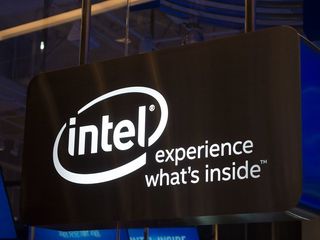Why aren't more manufacturers using Intel in their Android phones?

Two years ago, seeing the Intel Inside branding on a smartphone would have made a lot of people laugh. Qualcomm owned the mobile world, and Intel wasn't ready to compete. This past year, we saw something very different. Qualcomm stumbled with the Snapdragon 810 in a mostly-pointless rush to support 64-bit architectures, and the handful of phones we saw Intel processors in seemed to close the performance gap between $200 and $600 phones. Suddenly we had ASUS ZenFone 2 owners looking at HTC One M9 or LG G Flex 2 owners and asking what they actually got with their more expensive phone, and the answers to that question weren't obvious.
As we move into the next wave of Android phones, many most likely coming with Qualcomm's new Snapdragon 820 processor, some Android users are left wondering why we aren't seeing more phones packing Intel processors. Specifically, why aren't any of the top-tier manufacturers making the switch after this past year?

Anyone who has used the ZenFone 2 or ZenFone Zoom has seen the way these phones compete with the most expensive phones in the Android ecosystem. The $200 ZenFone 2 can launch Chrome and navigate ZenUI just as fast as the $800 Galaxy Note 5, which is impressive. It's clear ASUS and Intel know something about UI performance that Samsung doesn't, because none of Samsung's less expensive phones perform as well as the Note.
Without decent hardware-accelerated encoding and decoding, those features would be miserable on these phones.
Setting these phones side by side and just navigating the UI, you'd almost think they were equally capable of handling the tasks thrown at them. Where the differences become clear is launching GPU-intensive apps, specifically games. The ZenFone Zoom can play Vainglory, but getting there is a chore compared to any higher-end Android phone. This lacking GPU is also why the ZenFone Zoom camera doesn't do RAW photography or 4K video. Without decent hardware-accelerated encoding and decoding, those features would be miserable on these phones.
The other big reason you won't see top-tier manufacturers go Intel this year is the lack of an integrated modem. Qualcomm is currently offering processors with modems baked in that function on every band if you pay for the privilege, and Intel's mobile processors aren't there yet. This isn't necessarily a deal-breaker for every company, but Qualcomm's radio performance has become something of a standard and it's something they've gotten quite good at showing off.

When you see the little details Intel is missing, it becomes a little easier to understand why it is Qualcomm is still the default in most of the high-end Android phones. The intense focus on image quality and camera features is matched only by the desire to enjoy more games and have the best connection to our high-speed data networks, and right now Qualcomm crushes Intel in all of these things.
That doesn't take away from the things Intel is doing right, and in fact shines a spotlight on just how narrow of a performance gap there is between the low and high ends right now when it comes to day-to-day browsing and usability. If Intel can sprint on GPU performance and integrated modems with their next wave of mobile processors, this will be a question we can address with a lot more optimism in a year.
Get the top Black Friday deals right in your inbox: Sign up now!
Receive the hottest deals and product recommendations alongside the biggest tech news from the Android Central team straight to your inbox!
